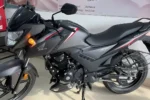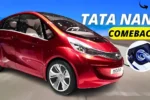MG Motor has officially announced a strategic shift in its vehicle lineup by embracing a multi-powertrain approach for select models, reflecting the brand’s commitment to flexibility, customer choice, and evolving global emissions regulations.
This move positions MG at the forefront of the growing automotive trend of offering multiple propulsion options internal combustion engine (ICE), hybrid (HEV), plug-in hybrid (PHEV), and fully electric (EV) within a single model family.
This strategy is already being seen in key models such as the MG ZS, MG4, and upcoming MG5 lineup, where buyers will now have greater freedom to choose the powertrain that best fits their needs without compromising on design or features.
Why MG is Shifting to a Multi-Powertrain Model Lineup
The global automotive market is undergoing a transformation. With the rise of electric vehicles on one hand, and continued demand for combustion and hybrid options in developing markets on the other, MG has chosen a balanced path.
The company’s multi-powertrain strategy allows it to cater to a wider spectrum of customersfrom those ready to go fully electric to those seeking a gradual transition via hybrid technology.
This approach also supports MG’s global footprint, where infrastructure for EVs may vary significantly by region. Markets like Europe, India, Australia, and Southeast Asia are all at different stages of electrification, making flexibility a key strength.
Models Receiving Multi-Powertrain Treatment
MG’s multi-powertrain rollout began with select existing models and will expand to future ones as part of its global product roadmap. The table below shows the initial models included and their respective powertrain options:
| Model | ICE | Hybrid (HEV) | Plug-in Hybrid (PHEV) | Electric (EV) |
|---|---|---|---|---|
| MG ZS | ✓ | Planned | ✗ | ✓ (MG ZS EV) |
| MG4 | ✗ | ✗ | ✗ | ✓ |
| MG5 (Next-gen) | ✓ | ✓ | ✓ | Planned |
| MG Hector | ✓ | ✓ (2026 Launch) | ✗ | ✗ |
| MG Marvel R | ✗ | ✗ | ✗ | ✓ |
The upcoming next-generation MG5 is expected to become a standout model in this strategy, offering ICE, hybrid, and EV variants under a unified design architecture. MG has also hinted at the possibility of introducing range-extender hybrid variants in the future.
Benefits for Customers
For buyers, this strategy means more choices under familiar nameplates. A customer who loves the styling and features of the MG ZS, for example, can now choose between petrol and electric power depending on driving needs and infrastructure availability. This also reduces the learning curve and brand-hopping for customers transitioning from traditional engines to electric vehicles.
It allows MG to maintain consistent styling, interior features, and safety ratings across variants, providing cost efficiency and better brand cohesion.
MG’s Global Vision and Sustainability Goals
This strategy also plays into MG’s broader sustainability roadmap. The brand aims to have 50% of its global sales comprised of electrified models by 2027, with full carbon neutrality targets set for 2045. By offering a range of drivetrain choices now, MG can ease customers into cleaner technology while scaling EV production capacity in parallel.
MG has also increased investment in modular platforms like the Modular Scalable Platform (MSP), which underpins many new-generation models and supports multiple drivetrain types without major redesigns.
Industry Impact and Competitor Response
MG’s decision puts pressure on other value-driven automakers to adapt similar flexible strategies. While many brands are pushing for all-electric transitions, MG’s balanced strategy could appeal strongly in emerging markets where EV infrastructure is still developing.
Competitors such as Hyundai, Kia, and Toyota are expected to continue parallel development paths, though MG’s unified model strategy gives it a unique market advantage.




